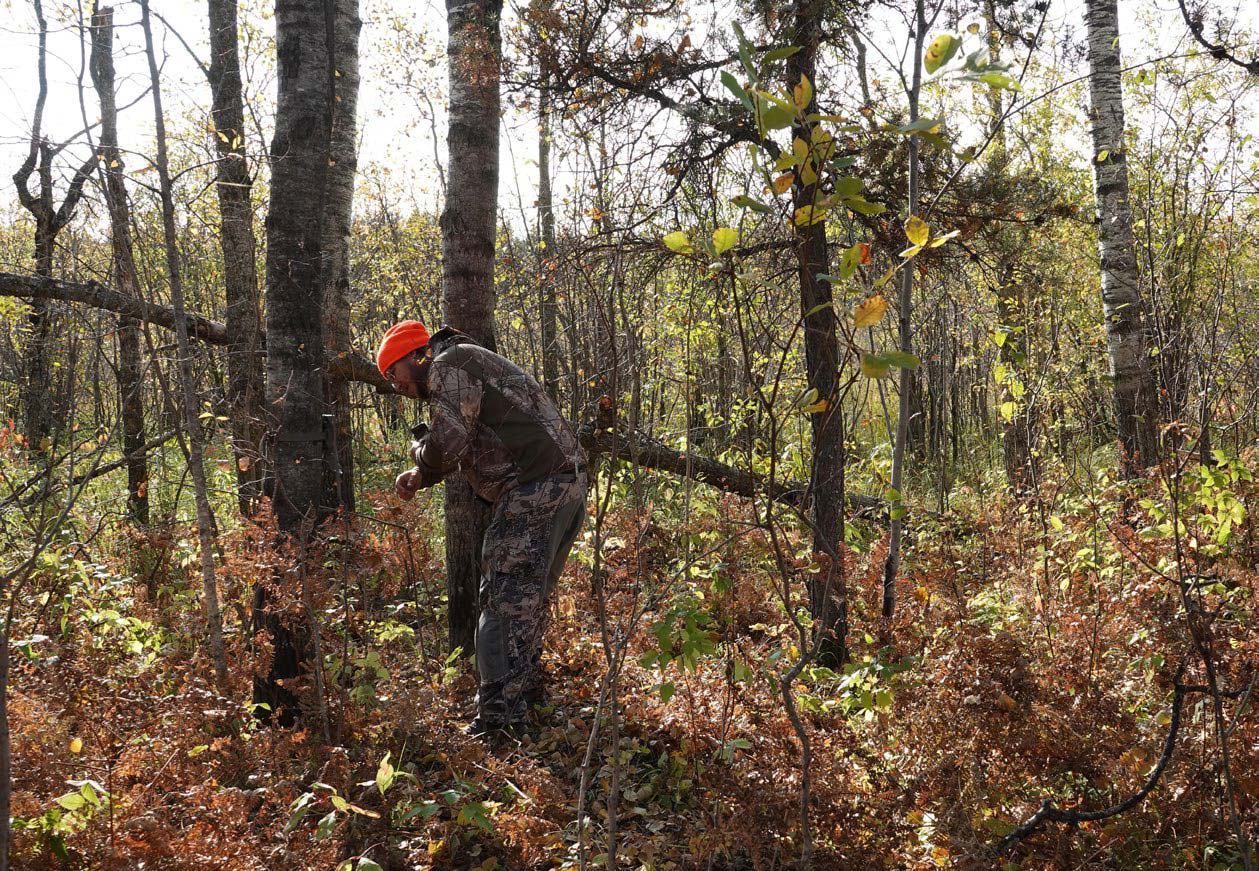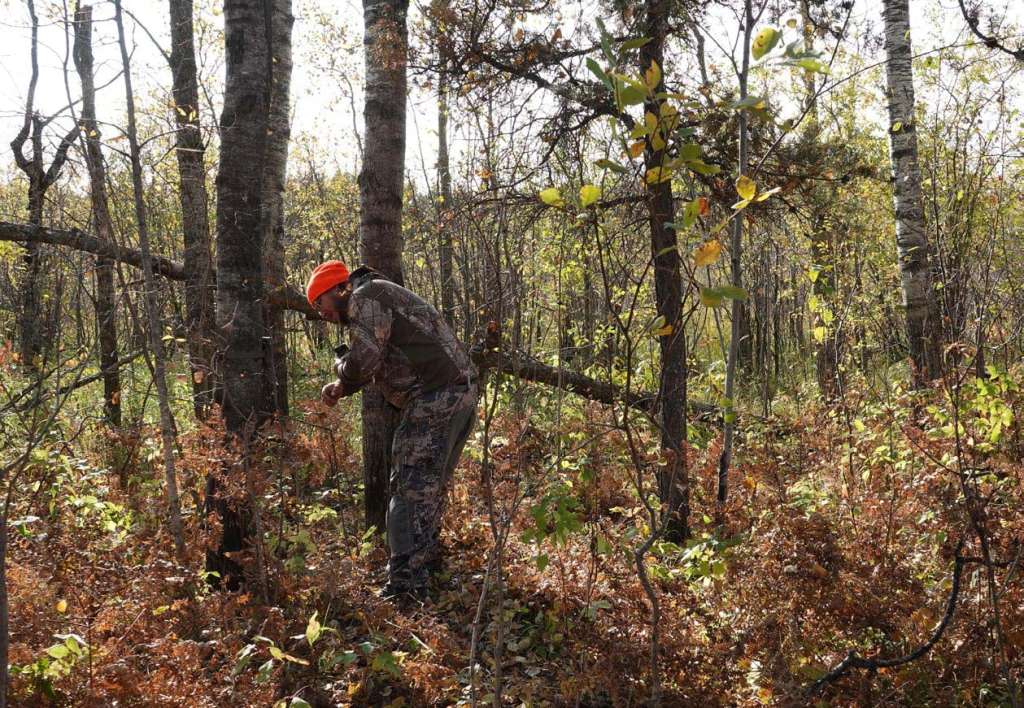
There are very few things more exciting or challenging than putting on spot and stalk on a deer. I don’t care if it’s a Pope and Young record breaker or a big bodied doe. If you’re good, and more often than not, incredibly lucky, with a few tips you may be able to punch your tag this year using spot and stalk methods.
In many areas, archery season means that you’re out looking for deer before they hit the peak rut, which, in my part of the world happens the first week of rifle season opener… of course you can still hunt with a bow, however your competition has gone through the roof with many more people in the woods who have a range that far exceeds what is ethical with a bow. All of this is to say that I’d rather punch my tag before I’m literally outgunned.
Learn Where The Deer Are Bedding
During the summer months and before deer enter the pre-rut and peak rut phase, bucks can be found in bachelor groups of 2 – 3 deer. They tend to hang out and feed together late in the evenings, and bed down in the tangliest, ugliest stuff they can find that will keep them safe and cool during the heat of the day. During the late summer (end of August through early September) I’m not looking for rubs or scrapes. I’m searching for water, food and those thick tangles that are often the daytime haunts of bucks.
The easiest way I’ve found to lock onto deer is look for an overgrown slough or other water source that is thick with vegetation. I’m looking for poplar or birch stands with tons of blowdowns that offer shade and thick cover. All the better if there’s an incline that gives a buck the advantage of a sightline.
When deer are in their beds, they often position themselves with their backs to the wind. This gives them the advantage of smelling danger, while being able to keep an eye on what’s potentially coming in front of them. As the season progresses, deer spend less time bedded down and more time roaming, eating and preparing for the rut.
Watch The Wind
Most experienced deer hunters understand how important it is to play the wind. Deer have an incredible sense of smell, in fact researchers postulate that a deer’s sense of smell is 500-1000 times better than humans. This means that if you get upwind of a deer, that deer knows you’re there. Period.
This underscores the importance of knowing the land you’re hunting on, and more importantly becoming familiar with the direction of prevailing winds. Always build your approach plan with the wind in mind.
A great way to prepare yourself either in the off season or during hunting season is to use an app like On X in the US or Ihunter in Canada to study the topography as well as satellite maps. Not only will you be able to identify a few potential spots to find deer, but you can then compare that information with a good weather app that shows wind speed and direction. It may sound like a ton of homework, but if you identify a couple of spots you think are going to hold deer you can also identify a few different approaches given the wind direction and speed… speaking of speed:
Slow The Hell Down!
If you’ve spent this much time preparing to put a spot and stalk on a deer, don’t lose your cool now. I’ve seen more hunters (myself included) put the time in and do everything right, until game time and they go ripping through the bush blowing out every deer within a mile.
Think you’re walking slow enough? Probably not. Take a few steps then pause. Look around and listen. Moving at a snails pace not only allows your to be quieter by having time to memorize the footing in front of you, but may also give you a glimpse of a deer feeding that haven’t noticed you yet.
Waling quietly in the woods is an art in of itself and I have written entire articles about slipping through the woods as quietly as humanly possible. If you haven’t read the article, the gist of it is this:
- First keep your head up. Staring at the ground is a great way to miss a deer sliding out of your area.
- Next, memorize the next few steps in front of you so you don’t have to look at the ground. Take note of branches and undergrowth that will cause significant noise.
- Position your body correctly. Bend your knees and bring your centre of gravity closer to the ground.
- Modern hunting boots and running shoes have a tendency to pitch us forward so that we’re leading our feet in an almost constant state of fall.
- Come down gently on your heel and roll your foot forward using the outside edge of your foot, feeling for twigs and branches you may have missed in your earlier scan.
- Repeat all of the above with every series of steps, and while it may feel really awkward at first, the more you practice, the quieter you will be.
Position Yourself Correctly
So, you’ve made it within shooting distance of a deer without getting busted. Now you have a choice to make. Can you make the shot from where you stand? Is the deer bedded down? Feeding away from you? This is the moment of truth and the best thing you can do is stay absolutely focused. Don’t start dreaming about that backstrap 20 yards in front of you.
If a deer is bedded down and I don’t have a clean shot due to its body position, I’ll settle in for a long wait. Find a comfortable position that will allow you to keep your legs limber, you gear handy and most importantly your bow at the ready. For me this means an almost prone position, except resting on my side, bow at vertical and arrow knocked. When the deer gets up, you are already positioned to simply clear your bow and take the shot.
If I have a deer in my sights and no clean shooting lane, it’s time to consider what the deer is doing. Ask yourself if the deer is working its way towards you or away from you, is it going to be quartering away or to? If the deer is moving towards me, I’m likely going to stay put and tuck in tight enough to some background cover and a potential shooting lane or two. If there’s no shooting lane available, I’ll slowly and quietly back out and try to find another approach.
Spot and Stalk whitetail deer is a challenging proposition at the best of times, there are a thousand variables that can make or break your stalk. If you do your homework and put yourself in a location where there are deer, move slow, be quiet and play the wind right you may get to experience the overwhelming sense of accomplishment that is a successful spot and stalk!
By Noel Linsey

